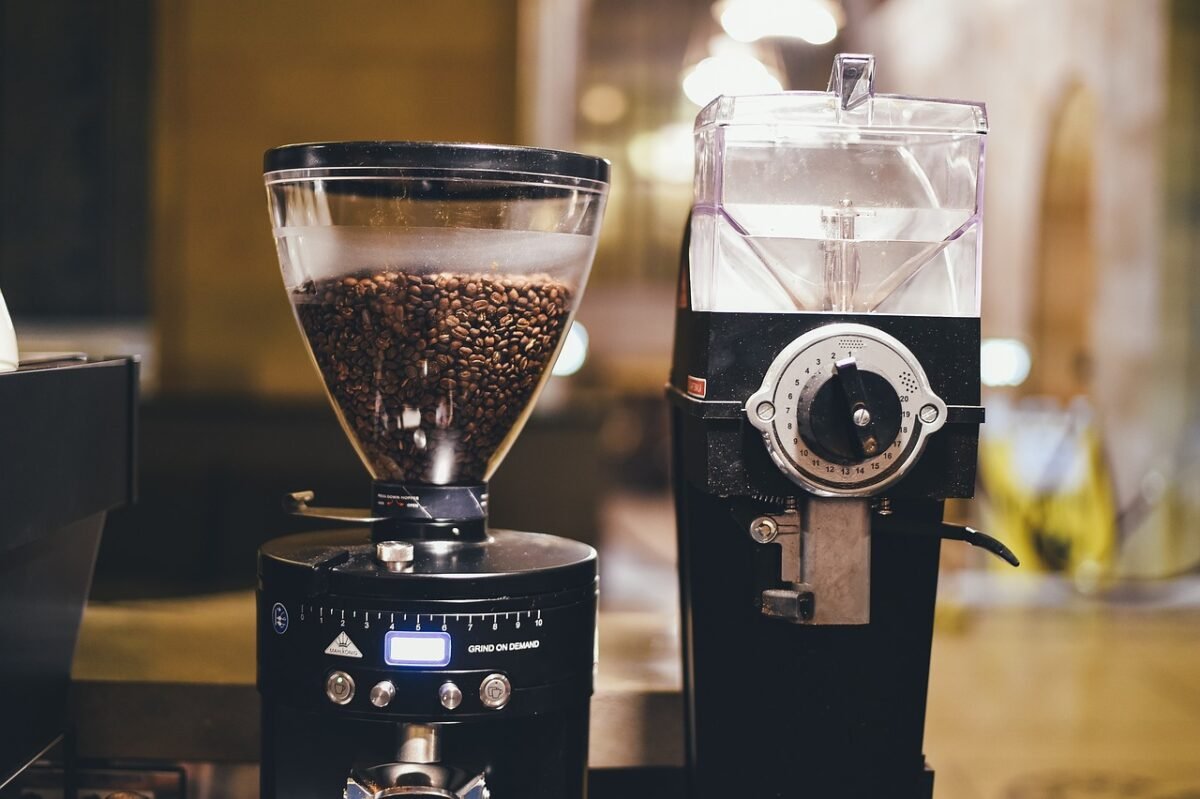Fishing the Ohio River is an adventure that combines scenic views, rich history, and excellent angling. The river spans nearly 1,000 miles across multiple states, offering diverse species and habitats. From tailraces below dams to secluded islands, here’s a detailed guide to the top five fishing spots in 2025, with tips on what to catch, how to catch it, and the best times to go.

Tailraces are highly productive because the dam releases oxygen-rich water that attracts baitfish, which in turn attract predator fish. Greenup Dam, on the Kentucky-West Virginia border, is famous for hybrid striped bass, white bass, and catfish.
Striped & hybrid bass: Peak season is spring and early summer when these fish feed aggressively near the current.
Sauger & walleye: Often caught in early spring and fall using jigs or live bait.
Blue & flathead catfish: Year-round, especially near deep holes downstream.
Best times to fish:
Early morning or late evening for bass.
Night fishing for catfish is excellent in summer.
Spring and fall for walleye and sauger.
Techniques & gear:
For bass: use topwater lures, jerkbaits, or crankbaits near fast-moving water.
For catfish: use heavy bottom rigs with live bait or cut bait.
Use braided line for strength against current.
Access & amenities:
Public access points exist on both Kentucky and West Virginia sides.
Parking areas and boat ramps are available, but shoreline fishing may require some walking.
Always wear a PFD near the tailrace — currents can be dangerous.
2. Meldahl Pool (Between Greenup and Markland Pools)
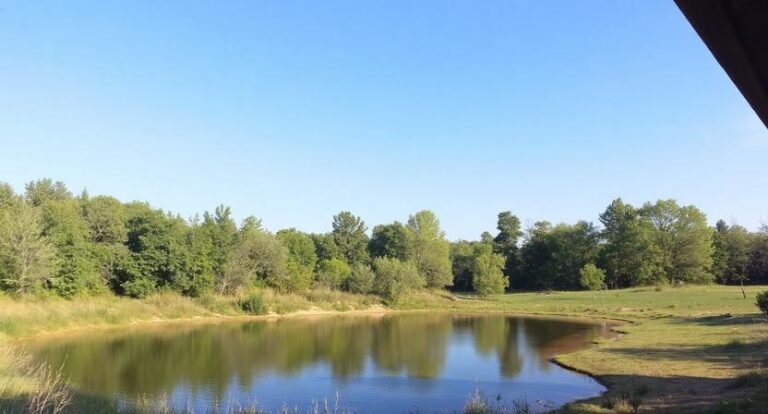
Meldahl Pool has a lake-like character with lots of submerged timber, brush, and islands, making it perfect for bass and catfish. Its calm sections are great for anglers using small boats, kayaks, or shore fishing.
Largemouth & smallmouth bass: Often near creek mouths, submerged brush, and rocky outcrops.
Blue & flathead catfish: Found in deep holes near timber.
Striped/hybrid bass: Around pilings, docks, and deep channels.
Fishing techniques:
Bass: soft plastics, spinnerbaits, or crankbaits around cover.
Catfish: heavy rigs with cut shad or chicken liver.
Stripers: trolling or casting jigs near drop-offs and submerged structures.
Access points:
Boat ramps in Aberdeen, OH, and Mayville, KY.
Some islands allow bank fishing, but check local rules.
- Tip: Kayak anglers can reach secluded fishing spots near the islands where larger fish often hang out.
3. Markland Pool (Cincinnati Area)
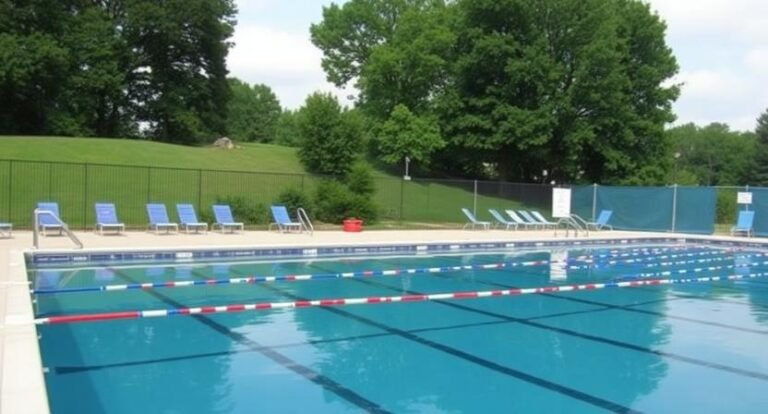
Markland Pool offers urban access with bridge pilings, piers, and bulkheads. It’s popular for anglers looking for catfish and striped bass without leaving the city.
Blue catfish: Often huge; found in deep holes along piers.
Striped/hybrid bass: Hunt near current breaks.
Smallmouth bass: Near rocky banks and bridge abutments.
Best fishing times:
Early spring and late fall for bass.
Summer evenings for catfish.
Techniques & gear:
Stripers: rattletraps, surface poppers, or jigs in the current.
Catfish: night rigs with cut shad or live bait.
Access & amenities:
Cincinnati and Covington parks provide public ramps and shoreline access.
Restrooms and parking are often available near urban ramps
4. Willow Island Dam Tailrace (West Virginia)
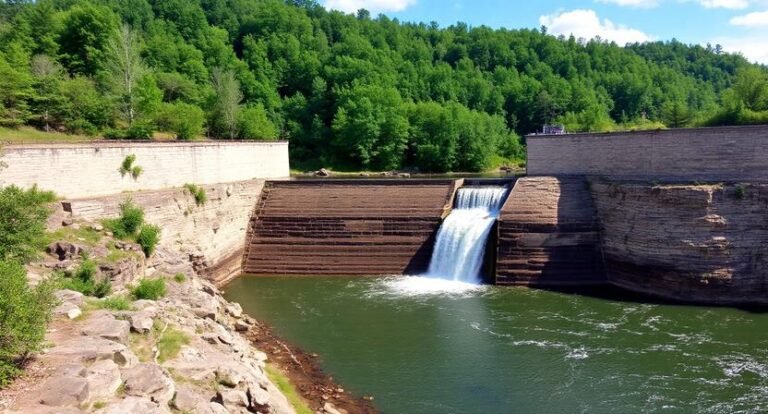
Tailrace fishing below Willow Island Dam is highly effective for big catfish, stripers, and sauger because of oxygen-rich water and constant flow.
Blue & flathead catfish: Trophy-sized fish are common.
Sauger & walleye: Found along edges near current breaks.
Crappie: In backwater areas nearby.
Fishing tips:
Use heavy tackle for catfish: 50-60 lb braided line with a strong rod.
Sauger/walleye: drift live minnows or jig along edges.
Crappie: small jigs or live minnows near submerged trees.
Access:
Shore anglers can fish from public points near the dam.
Boat anglers need caution — currents are strong near tailrace.
5. Ohio River Islands National Wildlife Refuge
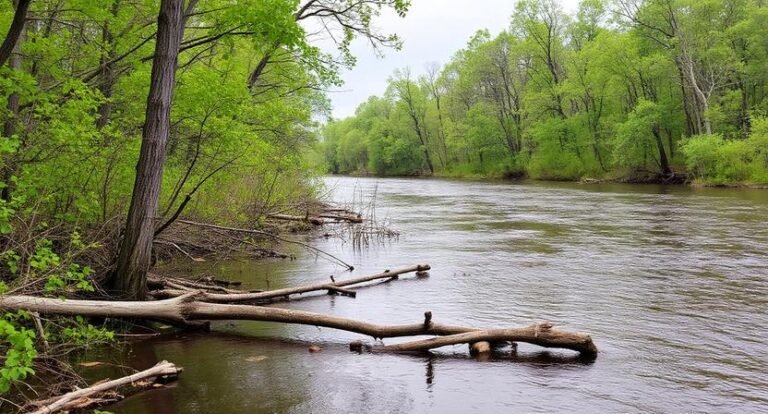
This refuge spans 362 miles and includes islands with public access for bank fishing. It’s less pressured than urban spots, offering more natural fishing conditions.
Bass, catfish, sauger, and crappie.
Seasonal migration patterns make spring and fall excellent for bass and walleye.
Access & rules:
Shore fishing allowed during refuge hours.
Check specific island regulations — some islands restrict certain fishing methods.
Tips:
Use polarized glasses to spot fish near the shore.
Fish around submerged logs and shoals for bass.
Night fishing is best for catfish.
6. Gallipolis Locks & Dam (Ohio, near Gallipolis)
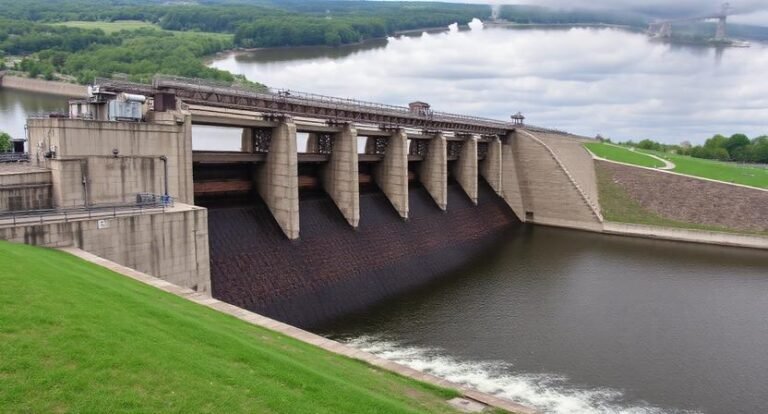
The area below Gallipolis Dam offers excellent tailrace fishing with lots of structure, ideal for striped bass and sauger. The current creates a feeding zone for predator fish.
Hybrid striped bass & white bass: Active in spring and fall.
Catfish (blue and flathead): Large holes and deep bends attract trophy catfish.
Walleye: Found near rocky points and dam edges.
Best techniques:
Use topwater lures early morning or late evening for bass.
For catfish, drift live bait or use bottom rigs with cut shad.
Walleye respond well to jigging along the edges.
Access & amenities:
Public boat ramps on the Ohio side.
Shore fishing is possible near parking areas.
- Tip: Check water releases from the dam; fishing is best during steady flows
7. Belleville Lock & Dam Area (Illinois / Kentucky border)
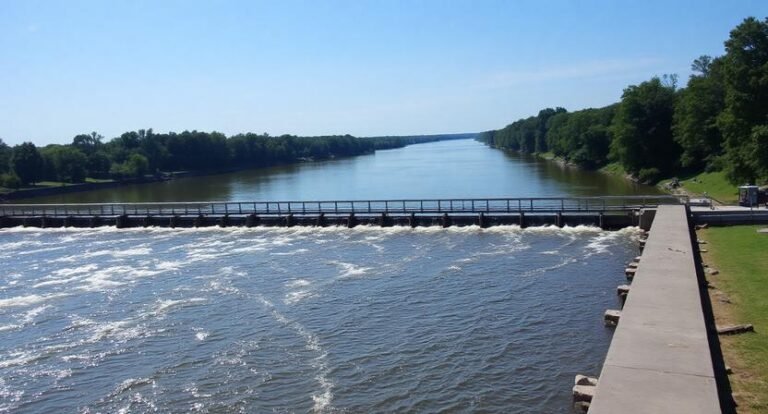
This stretch is less crowded but highly productive. Timber, shoals, and backwaters provide excellent habitat for multiple species.
Smallmouth and largemouth bass: Near submerged timber and rocky banks.
Striped bass & hybrid bass: Found in current breaks and around docks.
Channel and flathead catfish: Deep holes and backwater areas.
Fishing tips:
Use spinnerbaits or soft plastics around brush piles for bass.
Stripers: trolling deep-diving lures near structure.
Catfish: heavy rigs with stink bait or live bait at night.
Access:
Multiple public boat ramps, parking areas, and accessible shoreline.
Check for private property boundaries near islands.
8. Madison, Indiana / Louisville, Kentucky Section (Mid-Ohio River)

This urban-to-suburban stretch offers piers, bridge pilings, and bank access for anglers who want variety and easy access.
Blue catfish: Some of the largest in the river are caught here.
Striped & hybrid bass: Active in current channels and around bridge structures.
Crappie: Near piers and submerged trees.
Techniques:
Catfish: night fishing with cut bait or live shad.
Stripers: cast jigs or crankbaits near current breaks.
Crappie: use small jigs or minnows around submerged brush.
Access:
Parks along the river in Madison and Louisville provide ramps and shore access.
Urban fishing also offers conveniences like restaurants and parking.
9. Hannibal Pool (Ohio / West Virginia border)
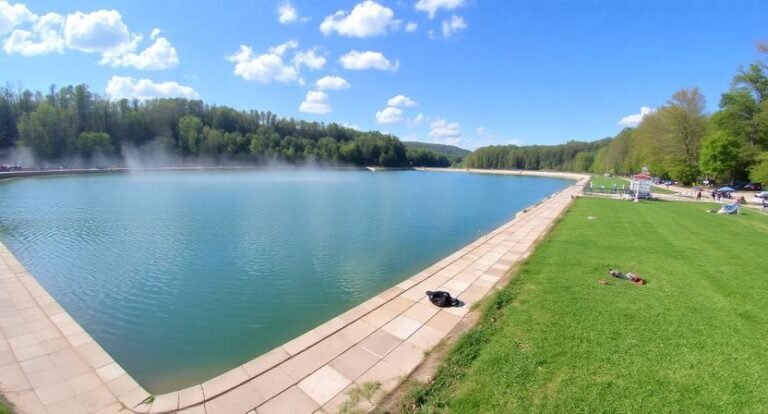
This quiet pool has deep holes, rocky ledges, and abundant timber. Less crowded, it’s ideal for anglers seeking trophy fish in a scenic setting.
Bass: Both smallmouth and largemouth thrive here.
Catfish: Blue and flathead in deep holes.
Sauger & walleye: Near dam tailraces and rocky banks.
Techniques:
Bass: crankbaits, jerkbaits, or soft plastics near cover.
Catfish: drift live bait or set bottom rigs.
Walleye & sauger: jig with minnows near drop-offs.
Access & amenities:
Boat ramps and public access points are available on both sides.
Shore anglers can fish near backwater channels for bass.
10. Bellefonte Islands / Backwaters (Kentucky side)

These islands and backwaters create a refuge for fish, especially in hot summer months. Calm waters allow anglers to target species without strong current interference.
Bass: Islands have shallow shoals for feeding.
Catfish: Deeper pockets along banks.
Crappie and sunfish: Backwater areas are ideal for smaller panfish.
Fishing tips:
Use soft plastics, small crankbaits, or live bait for bass.
Catfish: fish early morning or at night with cut bait.
Panfish: minnows or small jigs in shallow water.
Access:
Small boat or kayak is ideal to reach secluded spots.
Limited shoreline access in some areas; check public access maps.
Final Thoughts
Fishing the Ohio River in 2025 offers an incredible mix of adventure, accessibility, and species variety. From tailraces below major dams to serene backwater islands, there are options for every type of angler — whether you prefer bank fishing, kayak trips, or full-day boat excursions.
Remember: preparation and local knowledge are key. Knowing where to fish, what bait to use, and the seasonal patterns of your target species will dramatically improve your catch rate. Always follow local regulations, practice safety around strong currents and dams, and respect wildlife habitats to ensure the river remains a prime fishing destination for years to come.
Frequently Asked Questions (FAQ)
1. What are the best months to fish the Ohio River?
Spring and fall are ideal for most species like bass, sauger, and striped bass. Catfish can be caught year-round, with peak activity at night in summer.
2. Do I need a fishing license to fish the Ohio River?
Yes, all anglers must have a valid state fishing license for the state they are fishing in. Some areas may have additional rules for dams, islands, or refuge areas.
3. What types of fish are most common in the Ohio River?
Common species include catfish (blue, channel, flathead), bass (smallmouth, largemouth), striped bass, hybrid striped bass, walleye, sauger, crappie, and sunfish.
4. Are there safety precautions I should take?
Yes. Always wear a personal flotation device near dams and tailraces, check weather conditions, and be aware of river currents. Night fishing requires extra caution and proper lighting.
5. Can I fish from the shoreline, or do I need a boat?
Both options are viable. Some spots, especially tailraces and urban piers, have easy shore access, while islands, backwaters, and deep holes are best reached by boat or kayak.


